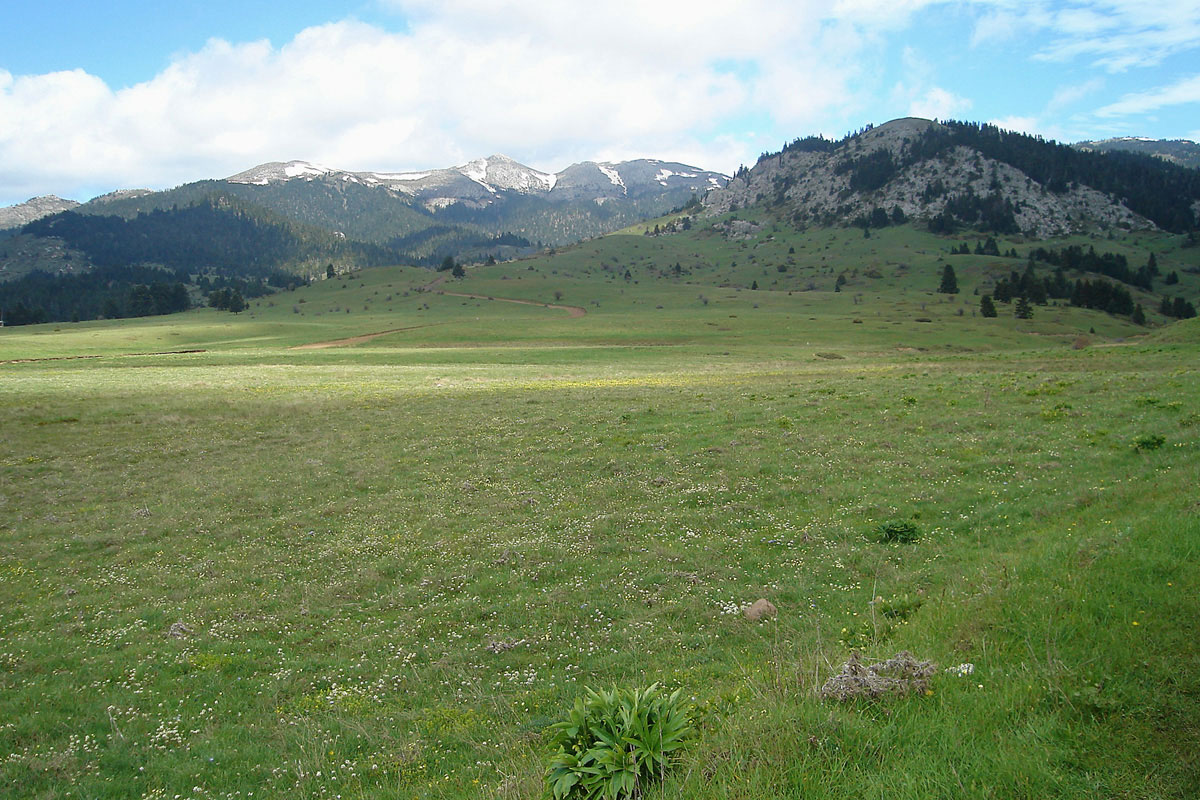Main menu
Conservation of priority forests and forest openings in "Ethnikos Drymos Oitis" and "Oros Kallidromo" of Sterea Ellada, LIFE11 NAT/GR/1014
Actions
Action A.5: Determination of vegetation composition and structure in the mountain grasslands (6210*, 6230*)

This action is a study of the vegetation composition and structure of the mountain grasslands of Mt. Oiti and Mt. Kallidromo in order to establish the base reference (initial situation) state of the habitats and its relation to environmental factors.
Vegetation composition and structure will be studied by transects placed at selected polygons of the habitat, so as to cover both the variation of the various facies and ecological conditions of the habitat, as well as the transition zones to other habitats (i.e., Abies forest, temporary ponds, heaths). It is estimated that approximately 5–10 transects will be placed on Mt. Oiti (20–30 % of the mapped polygons of the habitat) and less or as many on Mt. Kallidromo (where the habitat has not been mapped, so the number cannot be estimated accurately).
Total plant cover and cover per plant layer, as well as cover-abundance of all flora species will be recorded in 10x10 quadrats, set along the transects in late June or July of the first year of the project. Altitude, exposure, inclination, and geological substrate will be recorded at each quadrate. Soil profiles will be made and a range of parameters (such as soil water content, electrical conductivity, %CaCO3, organic matter (Cox), silica (FeS2), electric conductivity (EC), cation exchange capacity (CEC), and exchangable Ca, Mg, K, Na, Fe, H, Fe, Al, P, total P and N, C/N, C/P) will be measured at selected sites.
Note: The results of this action will certify the presence of habitat 6210* on Mt. Kallidromo. This habitat type, although described in the section “other site characteristics” of the Standard Data Form of the site, is not listed in the “Ecological Information Section”. In addition, there has been a recent scientific argument regarding the presence of this habitat in Greece. NAGREF will undertake the responsibility to provide the information for the necessary update of the official Standard Data Form of the Natura 2000 site GR2440006 “OROS KALLIDROMO”.
There is few data on the composition, structure and function of the grasslands in the study sites. The knowledge of the vegetation composition and structure, and its relation to the environmental parameters is essential in order to understand the ecological processes of the vegetation, which is, in turn, essential in order to draw specifications for sound management measures. Soil analysis, especially water content, is necessary since certain of these communities develop on water saturated soil and also because species composition depends on the soil properties. There is some data on the floristic composition of the mountain grassland communities of Mt. Oiti, based on 9 phytosociological releves (covering 4 of the 30 habitat polygons) and these are coupled by soil analysis at one site. Effective management requires more detailed data, including vegetation succession at more locations. There is scarce data for the communities of Mt. Kallidromo.
The data collected from action A5, regarding the floristic composition of the grasslands and its relation to abiotic factors, are necessary for the implementation of action A.6, and will also be used in order to create specifications for the grazing regime (action C.3). The results of the study will also provide the base reference state (initial situation) of the habitat and will contribute to the selection of the minimum required parameters to be used for monitoring of the results of concrete conservation actions (action D.2) and for after-LIFE monitoring. Finally, the data produced are necessary in order to certify the presence of habitat 6210* in the site GR2440006.
-
A report for the habitats of mountain grasslands (6230*, 6210*) on Mt. Oiti and Mt. Kallidromo with the description and analysis of vegetation composition and structure.
-
Specifications for a monitoring protocol for action D.2 and for after-LIFE monitoring.













